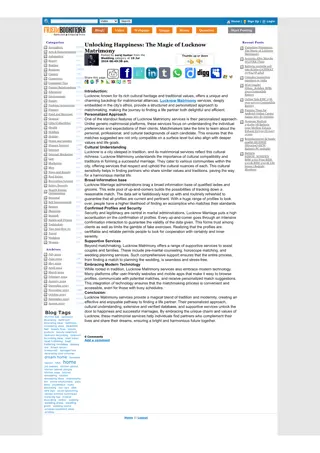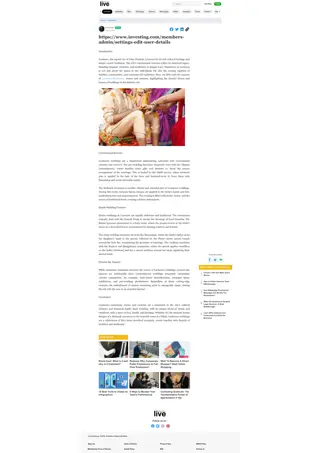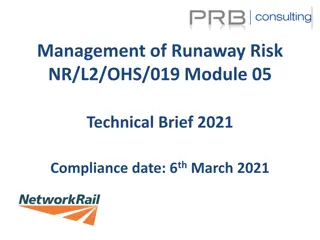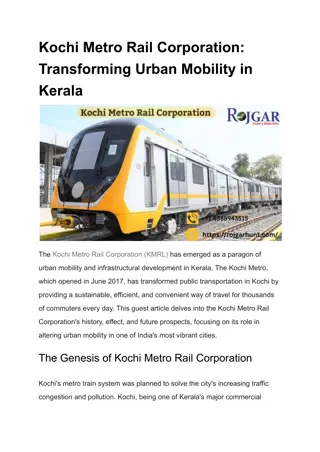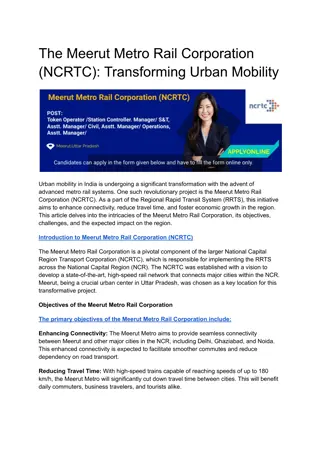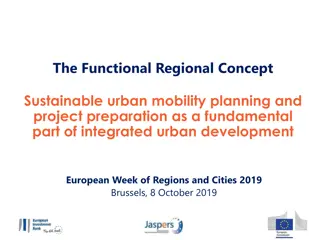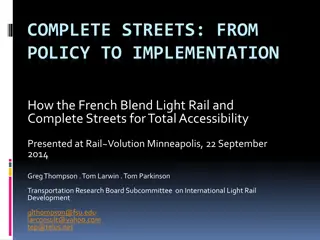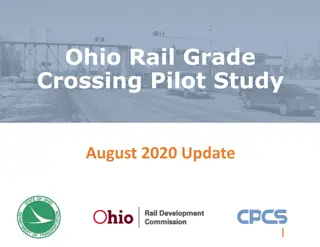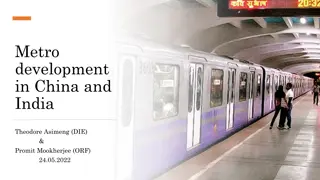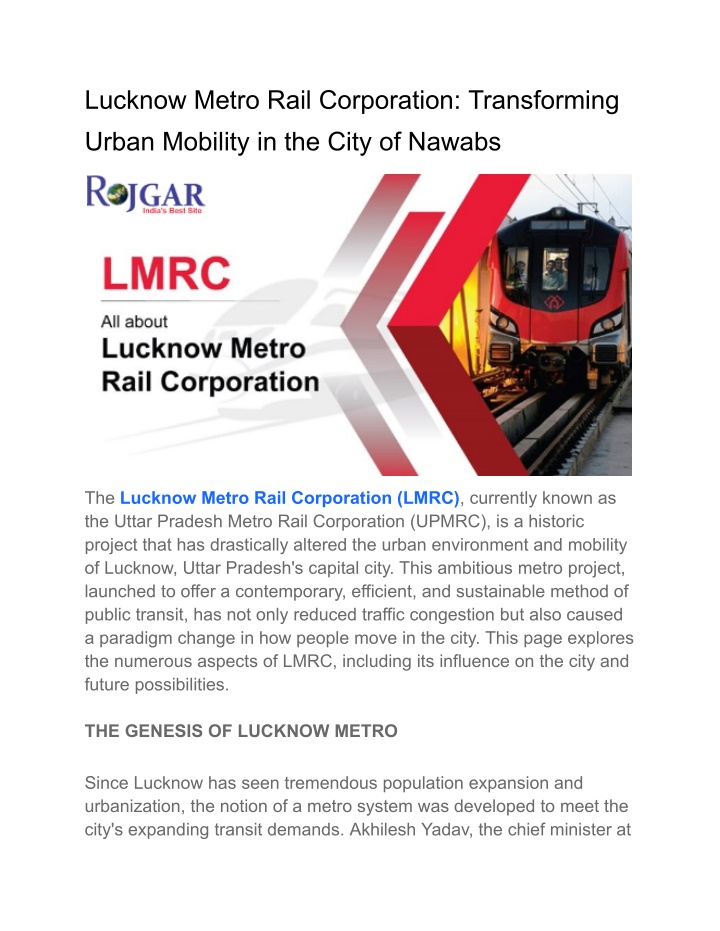
Lucknow Metro Rail Corporation_ Transforming Urban Mobility in the City of Nawabs
The Lucknow Metro Rail Corporation (LMRC), currently known asnthe Uttar Pradesh Metro Rail Corporation (UPMRC), is a historicnproject that has drastically altered the urban environment and mobilitynof Lucknow, Uttar Pradesh's capital city. This am
Download Presentation

Please find below an Image/Link to download the presentation.
The content on the website is provided AS IS for your information and personal use only. It may not be sold, licensed, or shared on other websites without obtaining consent from the author. If you encounter any issues during the download, it is possible that the publisher has removed the file from their server.
You are allowed to download the files provided on this website for personal or commercial use, subject to the condition that they are used lawfully. All files are the property of their respective owners.
The content on the website is provided AS IS for your information and personal use only. It may not be sold, licensed, or shared on other websites without obtaining consent from the author.
E N D
Presentation Transcript
Lucknow Metro Rail Corporation: Transforming Urban Mobility in the City of Nawabs The Lucknow Metro Rail Corporation (LMRC), currently known as the Uttar Pradesh Metro Rail Corporation (UPMRC), is a historic project that has drastically altered the urban environment and mobility of Lucknow, Uttar Pradesh's capital city. This ambitious metro project, launched to offer a contemporary, efficient, and sustainable method of public transit, has not only reduced traffic congestion but also caused a paradigm change in how people move in the city. This page explores the numerous aspects of LMRC, including its influence on the city and future possibilities. THE GENESIS OF LUCKNOW METRO Since Lucknow has seen tremendous population expansion and urbanization, the notion of a metro system was developed to meet the city's expanding transit demands. Akhilesh Yadav, the chief minister at
the time, laid the cornerstone for the Lucknow Metro project on March 4, 2014. To make people less reliant on their own cars and reduce traffic, the project's goal was to build a reliable, safe, and environmentally friendly public transportation system. PROJECT IMPLEMENTATION AND PHASES The implementation of the Lucknow Metro project was carried out in a phased manner to ensure systematic development and minimal disruption to the city's daily activities. THE PROJECT WAS DIVIDED INTO TWO PRIMARY CORRIDORS: North-South Corridor: This 23 km long corridor stretches from Chaudhary Charan Singh International Airport to Munshipulia. It covers important areas of the city, including Hazratganj, Charbagh, and Alambagh. This corridor was the first to be operationalized, with its initial stretch from Transport Nagar to Charbagh inaugurated on September 5, 2017, by Prime Minister Narendra Modi. Full corridor operation began in March 2019. Vasant Kunj and Charbagh will be connected by this east-west route, which is estimated to be 11 kilometers in length. In spite of the fact that it is still in the process of being developed, this corridor is intended to enhance the connectivity and coverage of the metro network across the whole city. TECHNOLOGICAL ADVANCEMENTS AND FEATURES There is a lot of modern technology and equipment on the Lucknow Metro, which makes journey safe, fun, and quick. A FEW OF THE MOST NOTABLE ATTRIBUTES ARE :
Automated Fare Collection (AFC) System : The AFC system reduces manual intervention and delays at ticket counters by enabling seamless ticketing and transactions through smart cards and tokens . Platform Screen Doors (PSDs): To enhance passenger safety, especially during peak hours, all metro stations are equipped with PSDs that open and close in sync with train doors. Communication-Based Train Control (CBTC): This advanced signaling system ensures high-frequency and punctual train operations by allowing real-time communication between trains and control centers. Eco-Friendly Infrastructure: The Lucknow Metro project does a lot to be eco-friendly. It has trains that use less energy, rainwater collection systems at stops, and solar power plants to lower its carbon footprint. IMPACT ON URBAN MOBILITY AND LIFESTYLE Following its inauguration , the Lucknow Metro has significantly altered the way in which individuals navigate the city and conduct their daily activities. Here are a few of the main benefits : Less Traffic : The metro has greatly reduced traffic on the city's roads by giving people a safe option to driving their own cars. Because of this, travel times have gotten faster and pollution from cars has gone down. Enhanced Connectivity: The metro network connects major commercial, educational, and residential areas, making it convenient
for people to commute for work, study, and leisure. This has also boosted the local economy by improving access to businesses and markets. Commuters, especially ladies and the elderly, may be certain that the metro system provides a secure and pleasant means of transit. The handicapped facilities and women's carriage demonstrate the metro's inclusivity. The economies of places along metro lines have grown thanks to them. Around metro stops, business organizations, land projects, and other groups have grown, which has helped the city grow. CHALLENGES AND FUTURE PROSPECTS The Lucknow Metro project has struggled with land acquisition, finance, and technical obstacles despite its triumphs. However, project leadership and stakeholder collaboration have guaranteed continuous development. Looking ahead, the Lucknow Metro is poised for further expansion and integration with other modes of public transport, such as buses and suburban trains, to create a comprehensive urban transit system. The planned East-West Corridor and proposals for extending the existing lines will enhance the metro's coverage and utility. CONCLUSION The Kolkata Metro Rail Corporation, has transformed Lucknow's urban transportation. It has improved the city's traffic and citizens' quality of life by offering contemporary, efficient, and sustainable
public transit. The metro network will shape Nawabs' urban transportation as it grows.







